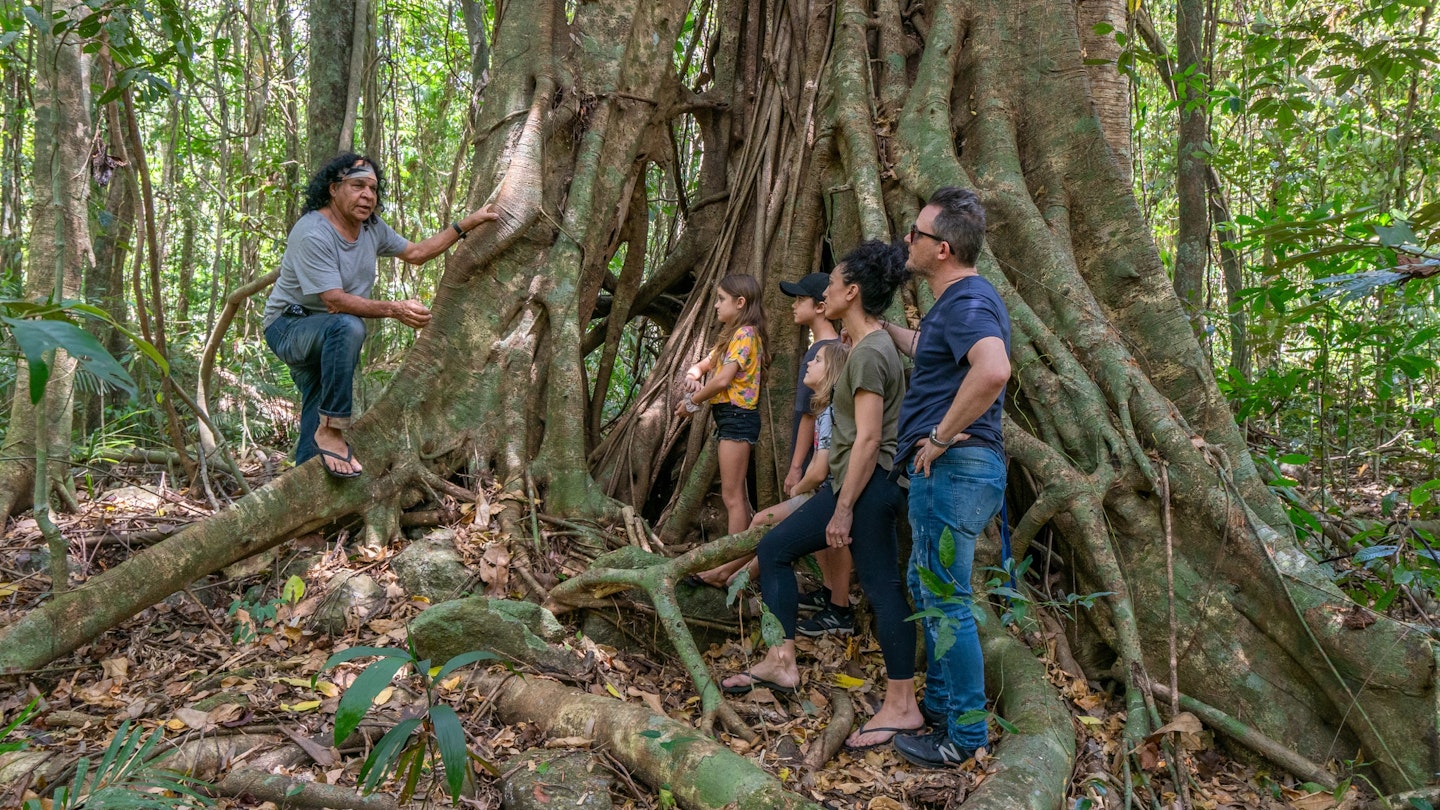Australia’s story is nothing short of epic. It is a story in which the natural world – continental in scale, stunning in its beauty – takes center stage. It is also the soulful story of Australia’s first inhabitants whose deep connection to the land offers valuable lessons in sustainability.
Aboriginal Australians are the world’s oldest continuous culture, their history dating back at least 60,000 years. When European settlers arrived in Australia in 1788, hundreds of culturally distinct nations, clans, and language groups inhabited what we now know as Australia, showcasing a diversity that mirrored the land itself. They were forest people and desert dwellers; they were fisherfolk and farmers.
More than two centuries later, Aboriginal peoples maintain an unbroken connection to the land, or Country. Tourism is increasingly embraced by Aboriginal communities recognizing that it serves as a platform through which to share their stories, aiding in maintaining that essential bond into the future. Across the country, a growing range of authentic Aboriginal tourism experiences offers opportunities to engage with the traditions and stories intrinsic to this culture.
Art Centres & Festivals
Travellers to Australia have long ventured into the Outback to have meaningful encounters with Australia’s first peoples. In this journey, Aboriginal art centers provide excellent venues for such experiences. Visitors may find themselves sitting alongside an artist as they patiently paint intricate dot points on bark or canvas. Alternatively, they might spend the afternoon shaded by local women weaving baskets from pandanus palm fronds.
Kevin, an artist at Injalak Arts in Gunbalanya, Northern Territory, emphasizes that everyone benefits when travellers show an interest in these ancient traditions. “Some visitors enjoy watching us paint, while others ask questions. Either way, we learn something about each other,” he explains.
At Injalak Arts, the x-ray style of painting, a technique portraying the interior skeleton of the subject, predominates. This style is emblematic of art found in Australia’s Top End and particularly in Arnhem Land, inspired by millennia-old art that adorns rock walls throughout northern Australia. The rock art, painted by ancient peoples, serves as a form of storytelling consistent with modern Aboriginal art.
Similarly, in Cape York, Jarramali Rock Art Tours visits the remarkable Quinkan Country rock art sites near Laura. Due to its significance, UNESCO ranks Quinkan as one of the world’s top ten sites for rock art, with some art here dating back 20,000 years. Additionally, the biennial three-day Laura Aboriginal Dance Festival serves as a vibrant celebration of Indigenous culture and dance.
Take to the Water
If venturing to the Outback isn’t possible, there are still enriching Indigenous experiences available closer to the coast.
Simon Thornally, owner of Saltwater Eco Tours in Mooloolaba, Queensland, delights in showcasing his community. “People can simply jump on board and have an authentic Indigenous experience here on the coast,” he says.
Saltwater Eco Tours takes guests onto rivers and into ocean waters in a replica of a wooden sailboat yielding a century of history. Led by guides from the local Kabi Kabi (Gubbi Gubbi) nation, these tours embark on a rich storytelling journey through local Indigenous life, both past and present, culminating in bush tucker-infused catering with native flavors.
A further drive north leads to Port Douglas, the gateway to the Great Barrier Reef, where Walkabout Cultural Adventures offers an extraordinary landscape to explore. “We have beautiful rainforest, mountains, estuaries, and even access to the Great Barrier Reef,” Juan Walker, the Kuku Yalanji owner, notes. “We aim to teach visitors as much as possible about our connection to the country, emphasizing how all elements are interconnected.”
City & Other Encounters
Visitors can also engage meaningfully with Aboriginal culture in Australia’s vibrant cities. In Melbourne, Indigenous guides at the Royal Botanic Gardens Victoria lead Aboriginal Heritage Walks, recounting oral histories essential for preserving cultural identity.
The gardens, historically significant meeting places for the Boonwurrung and Woiwurrung language groups, feature river red gums and yellow box eucalypts dated nearly 350 years old. Additionally, the gardens contain plantation spaces that provide bush foods and plants ceremonially significant.
In Sydney’s district known as The Rocks, Dreamtime Southern X offers a journey into the past with Aboriginal creation stories. Guided by Margret Campbell, visitors participate in a traditional smoking ceremony while learning about Sydney’s rich pre-European history through powerful tales from the Aboriginal Dreaming.
Such encounters provide not only insights into the past but also highlight the continuity of Aboriginal culture, vibrantly alive and evolving today across Australia’s cities.
From rich storytelling and art in the Outback to engaging tours and city encounters, iBestTravel offers countless opportunities to connect with the Indigenous heritage of this extraordinary land.




